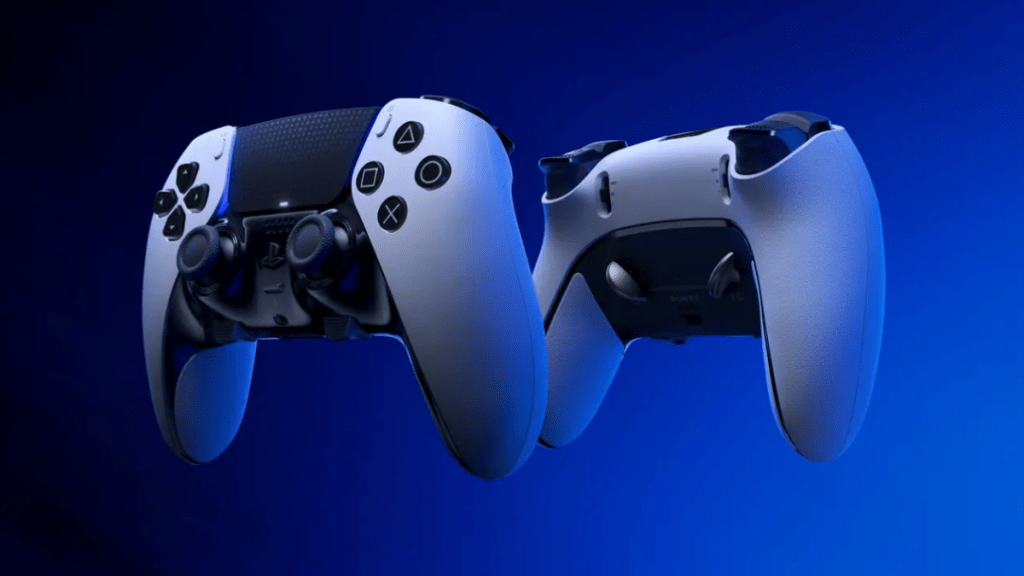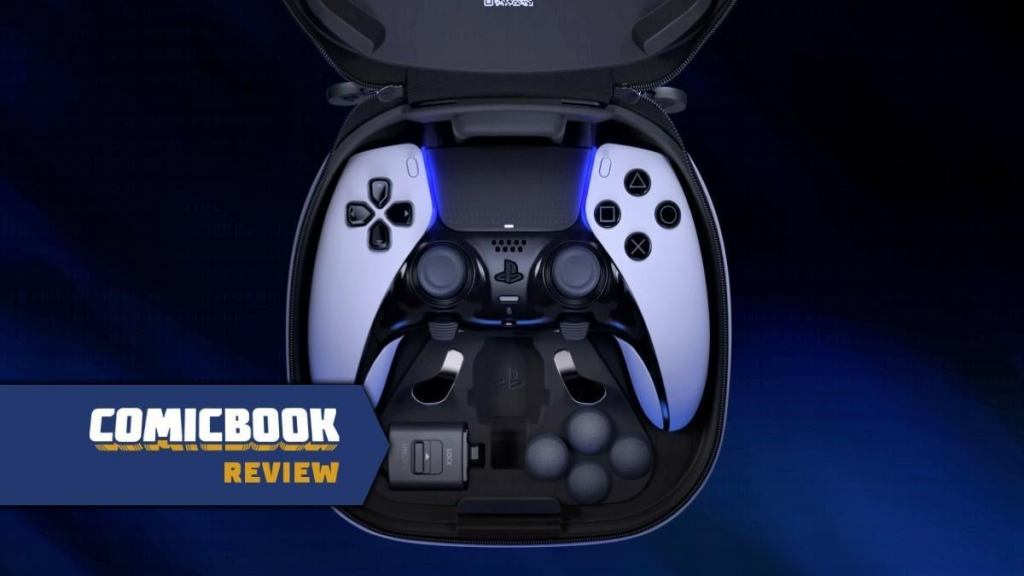Virtually everything about Sony’s new DualSense Edge controller for PlayStation 5 can be described as “premium.” The controller itself is of a much more premium quality compared to the standard DualSense, the carrying case that houses the DualSense Edge is premium, and it even comes at a premium price that will do some damage to your wallet. And while the DualSense Edge isn’t perfect in every way, those who primarily play games on PS5 will definitely want to consider splurging on it if they can afford to do so.
Videos by ComicBook.com
By all accounts, the DualSense Edge might be the best video game controller I have ever used. When the PS5 first released, I was quick to fall in love with the DualSense and immediately considered it my favorite gaming controller ever. Between the DualSense’s haptic feedback, adaptive triggers, and sturdy build, I found it to be a vast improvement over not only the DualShock 4, but essentially every other standard console controller we’ve ever seen.
With my love for the DualSense already quite high, the Edge arrived and has found a way to improve upon everything that was seen in the original controller. At a baseline level, the makeup of the DualSense Edge is better than what has been seen with basic PS5 controllers. A slightly rubberized grip now wraps around both handles, the L2 and R2 triggers feature subtle grooves, and the controller itself has a bit more heft, which makes it feel more like a nice piece of tech and less like a toy. What’s even more impressive is that all of the additional texturing seen on the DualSense Edge is comprised of PlayStation’s iconic cross, square, triangle, and circle symbols, which is a fantastic touch.

In terms of new features that the Edge has, many of its additional perks are similar to what is seen with Microsoft’s Xbox Elite Controller. The DualSense Edge comes with four additional back buttons that can be installed on the rear of the controller, four swappable thumbsticks caps, and the aforementioned carrying case (which is extremely sturdy) to house all of these accessories. There are also three trigger stops that can be used with the DualSense Edge, which is primarily helpful when playing shooters. All in all, these features of the controller aren’t vastly unique when compared to competitors, but it still brings a level of customization that PlayStation players aren’t used to seeing.
Speaking of customization, one of the nicer aspects of the DualSense Edge is found within the menus of the PS5. Through the quick activation of a “Function” button on the Edge, the PS5 lets you access a series of options to set up the controller in any way that you see fit. Through these various menus you can reassign all of the buttons of the DualSense Edge, fine-tune various sensitivities, and ultimately determine just about everything related to how you want the controller to work. Best of all, if you have more than one person that is going to use the Edge, you can create your own unique profiles to quickly swap between settings that are meant for different users. It’s a nifty setup and is far more streamlined than others that I’ve seen.
Likely the smartest thing that Sony included with the DualSense Edge is the ability to outright remove the “stick modules” that are attached to the controller. In recent years, thumbstick “drifting” has become a massive problem for Nintendo, Microsoft, and even Sony. To help offset this problem to some extent, Sony has designed the DualSense Edge so that its thumbsticks can be easily removed and swapped out in mere seconds. Although this likely isn’t a big selling point of the Edge up front, the fact that the stick modules can be rotated out over time (Sony sells new thumbsticks for only $20) should allow the controller to last far longer than most others. It also means that if drifting was to ever become a problem with the Edge, it wouldn’t mean that the entire controller would need to get tossed out as a result.
The one glaring weakness of the DualSense Edge, and the thing that I simply cannot wrap my mind around, is that the controller has a much shorter battery life compared to the normal DualSense. The battery of the DualSense is something that some PlayStation fans have been complaining about dating back to the launch of the PS5, although I never personally found myself running out of charge during even my lengthiest gaming sessions. When it comes to the Edge, though, the controller’s ability to hold a long charge is its biggest downside. In some of my own sessions using the DualSense Edge, I’ve run out of battery life after only five hours or so, which is incredibly short. I’m not sure why Sony decided to chop the Edge off at the knees in this manner, but it’s the only major problem I have with the controller itself.
The big question surrounding the DualSense Edge, and the thing that you’ll have to decide for yourself, is whether or not it’s worth Sony’s asking price. The Edge retails for a staggering $199.99, making it quite possibly the most expensive video game controller ever. To put in perspective just how high this asking price is, the DualSense Edge is literally half the price of the PS5 Digital Edition and is equal to the value of a Nintendo Switch Lite. Asking customers to pay this much for a controller is a very tough sell and is likely going to be the breaking point with many when it comes to picking up the DualSense Edge. Still, those that do end up paying the entry fee will be met with a fantastic controller that should continue holding up for the entirety of the PS5’s life cycle.
Taken as a whole, I really love the DualSense Edge and have found myself enjoying playing PS5 games considerably more over the past couple of weeks. Although I wish it featured a better battery life and the price is quite steep, this is a product that Sony has clearly poured a lot of care into and the result is a controller of one of the highest qualities that I’ve ever seen. If you’re a PlayStation fan who is considering throwing down the $200 needed to snag the DualSense Edge, I have a hard time believing that you’ll regret the investment.
A review unit of the DualSense Edge was provided by Sony for the purpose of this review.









